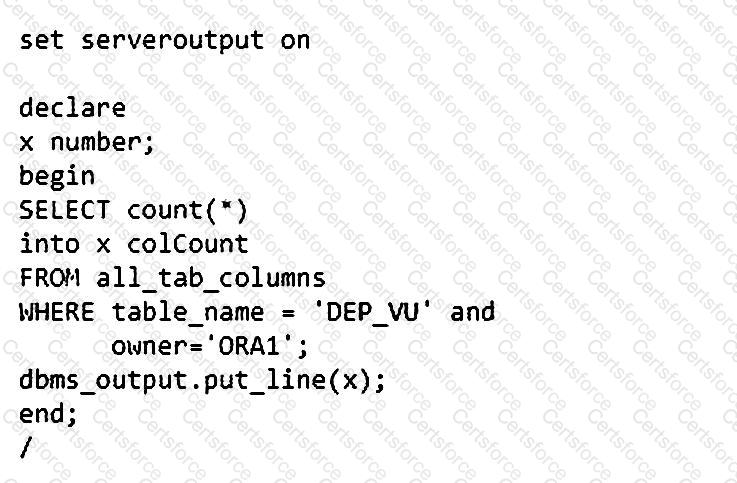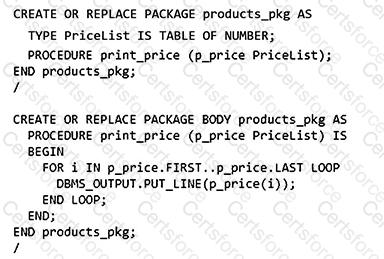The SH schema contains the PRODUCTS table with column PDT_NAME defined as VARCHAR2(10).
Which two blocks of code execute successfully when invoked by user SH? (Choose two.)
Examine this DECLARE section:

Which line will cause an error upon execution?
Examine the structure of the ora1.depts table:

Now, examine these statements issued by user ora1 which execute successfully:
Create or replace view dep_vu as select * from depts;
Alter table depts add dep_email varchar2(20);
Finally, examine this block of code executed by user ora1:

Which is true?
Which two are true about implicit data type conversion? (Choose two.)
Which two are valid MODIFIER values for the PLSQL_WARNINGS parameter? (Choose two.)
Which two are true about exception handling? (Choose two.)
Which two are true about named notations in a PL/SQL subprogram? (Choose two.)
Examine these statements issued by user SH which execute successfully:

DBMS_OUTPUT.PUT_LINE(p_price(i)); END LOOP; END; END products_pkg; /
Now, examine this anonymous block executed by SH:

Which is true about the anonymous block?
Which two are true about lexical units? (Choose two.)
SERVEROUTPUT is enabled.
Which code block will display the values from 1 to 10 in descending order?